

A Roman-remodelled Greek theaterThis largest ancient theater in Sicily after the one in Syracuse is dug into the mountainside and affords spectacular views of the ocean and Mt. Etna. |
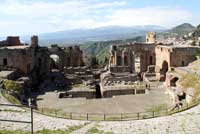
|
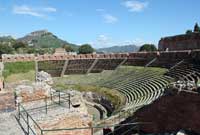
|
| Like most Greek theaters, the cavea was dug into the hillside; here nine wedge-shaped blocks of seats provided seating. Although the portico was partially restored in the 20th century, it wrapped around the top--provided a roofed entrance into the cavea. See page 2 for close-up views. Also see the Roman theater at Orange for an elaborate surviving Roman theater. | ||
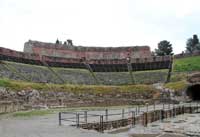
|
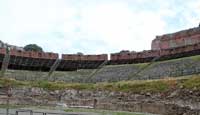
|
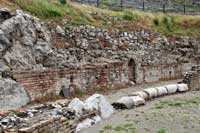
|
| The portico wall partly survives with a few remaining stumps of columns. Edicules, both arched and pedimented, decorate the top wall. | ||
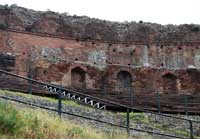
|
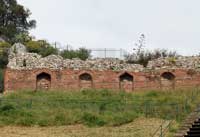
|
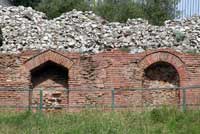
|
View from the theater"The celebrated view from the top of the cavea inspired Gustav Klimt, Paul Klee and many other artists. Goethe, visiting in 1787, exclaimed: 'Never did any audience, in any theatre, have such a spectacle'" (Grady 458). |
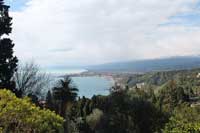
|
|
Remains of the proscenium (or stage) and the building behind the stage--the scaenae frons--as well as part of the side wingsSee the next page for details. | ||
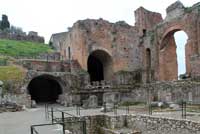
|
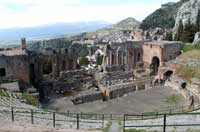
|
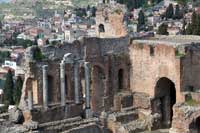
|
Continue to page 2.
Works Consulted or Quoted:
Grady, Ellen. Sicily [Blue Guide]. New York: Norton, 2006.
 Click here to return to index of art historical sites.
Click here to return to index of art historical sites.
 Click here to return to index of artists and architects.
Click here to return to index of artists and architects.
 Click here to return to chronological index.
Click here to return to chronological index.
 Click here to see the home page of Bluffton College.
Click here to see the home page of Bluffton College.
![]()

© 2014 Mary Ann Sullivan.
I have photographed (on site), scanned, and manipulated all the images on these pages. Please feel free to use them for personal or educational purposes. They are not available for commercial purposes.
